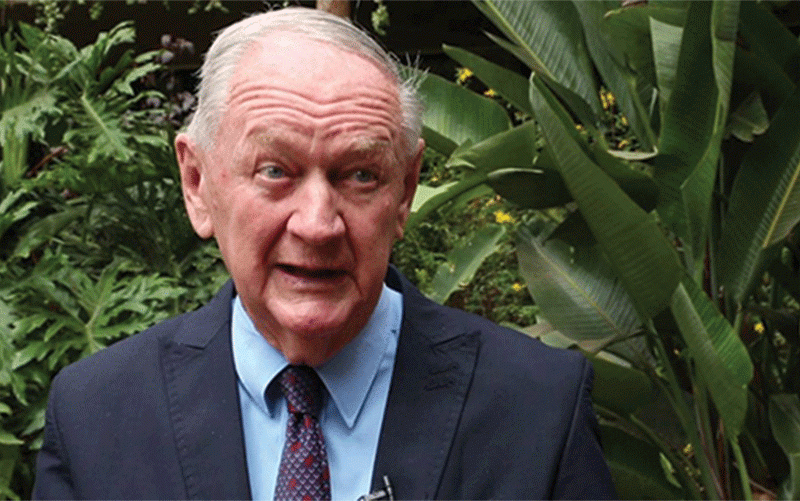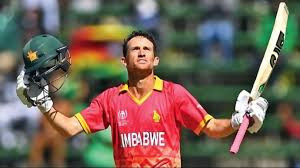
THESE past two weeks, we have seen the local currency crash, panic over the real value of our United States dollar (US$) accounts with the banks and retail prices changing so fast the supermarkets could not keep up and simply started to price exclusively in US$. What is going on?
The first lesson is that we have learned very little from our recent history. Between 2000 and 2008, the Reserve Bank of Zimbabwe, faced with the collapse of the economy, started printing money.
As it did, the real value of our currency declined at an accelerating rate until in 2008, we were doubling prices every three hours. Why?
That was clear when we were issued with notes with a face value of $100 trillion. The true nature of that situation was amplified when the same institution issued a one dollar note. It was like living in a lunatic asylum or a children’s playground.
Eventually, the people who had overseen this example of State stupidity, were forced to abandon our own currency and adopt the currencies of six countries as a legal means of exchanging value in our markets.
In six months, we had totally dollarised. Goods were back on our shelves, prices stabilised and the economy recovered rapidly in certain respects.
I say “certain respects” because our productive sector did not recover and at the end of the Government of National Unity in 2013, we were still importing 70% of everything. We were a hard currency supermarket dumping ground.
Then, when the new government came to power in 2013, the authorities started printing money again — not using paper this time but simply creating nostro dollars using the computer.
- Teachers, other civil servants face off
- Economists caution RBZ on cash limits
- Economists caution RBZ on cash limits
- Is Zanu PF ready for elections or its just a masquerade?
Keep Reading
That time, we suddenly had money, real money — by 2017 our bank accounts held US$23 billion. We still had a semblance of normalcy, our shops were full of goods and prices, although reasonably stable, were now showing signs of disturbing inflation in US dollar terms — unheard of in the rest of the world.
Then another change of government — this time twice in eight months, the second time brought Mthuli Ncube in as Finance minister.
After a few months in charge, he announced the unthinkable, what we had in our US dollar-denominated bank accounts were not real dollars, they had been created and their real value was questionable.
He separated real US dollars from the fictitious dollars and called the latter “Real Time Gross Settlement dollars” or RTGS dollars.
Then he floated the latter and in 18 months, our US$23 billion had shrunk to an estimated US$3 billion in real market terms. We were once again poor.
But our productive economy — our factories, farms, mines and the informal sector had started to claw back to their position as suppliers — the locally-produced stock in our supermarkets crept up to 60%, as imports shrank. We were suddenly more self-sufficient because the weak local currency gave our people buying power which could not be met by imports.
After 20 years of negative growth and collapse, we were suddenly creating jobs and a surplus on our balance of payments was emerging as our export earnings began to exceed our imports. We looked good and on the fiscal front, we were not only paying our way but operating on the basis of an excess of income over expenditure by the State.
The only problem was a rogue Reserve Bank of Zimbabwe (RBZ) and poor management of our monetary situation. The currency is the life blood of any economy and if you mismanage this aspect of national policy, it actually undermines everything.
We were completely isolated from the global financial system and to remedy this, our central bank began to overreach itself to help meet the essential needs of our growing economy.
We had a rapidly growing gold industry, dominated by hundreds of thousands of our people who had found that they could mine gold near the surface and make a living.
The RBZ held a monopoly on gold buying and started to print money to buy gold — perhaps in the mistaken belief that they were getting the gold at a 40% discount because the local currency involved was created on a computer in the bank.
Work it out, on 30 tonnes of gold a year, purchased with 40% in local currency, that is US$840 million real dollars — multiply that by the value on the auction of — say 2 000 to one and the bank is printing $1,680 trillion.
Then there is the retention system for all hard currency earnings — 25% of exports and until recently 20% of hard currency earnings on the formal market retails sector. If we say this was about US$300 million a month, at 2 000 to one, that is an astonishing $600 trillion per month.
Whatever the bank has been doing in reality, those two operations would explain the 500% increase in money supply in the past year. What we know from statistical analysis is that inflation is about 1:1 with money supply. The evidence is that this has been accelerating in recent weeks.
In my view, it is the issue of money printing at the RBZ that is the primary cause of the recent collapse of the local dollar. However, there are those who have pointed to the payments by the Treasury as another cause.
No doubt this exacerbated the situation because anyone getting large payments in Zimdollar from government would want to get rid of them as quickly as possible and they would most likely turn to the black market and buy US dollars.
The response by the State to this chaos has not been pretty. Conventional advice would be:
- Stop the RBZ from buying gold altogether, clean up the industry and allow the private sector to buy raw gold from producers, refine it and sell it on the international market;
- Stop all retentions by the central bank, but require exporters to liquidate their earnings on the interbank market at a market-driven exchange rate within seven days;
- Use the local dollar as the sole means of exchange on the domestic market for all transactions including paying taxes and levies; and
- Lift exchange control on current transactions.
All regional States follow the above rules and have both price and currency stability.
Instead, we have had a mismatch of policy changes which do not seem to have been able to bring the situation under control.
“Dollarise” the pundits cry, but that is not the solution. If we did, it would cripple our domestic economy, destroy jobs and our government will not maintain salaries at present levels.
However, what they did this past week, for the first time, might have the desired impact on the money market.
Right now, we have about US$2,3 billion in our bank accounts, but at present exchange rates, only US$150 million in real value of all Zimdollar balances.
We have hard currency surplus in our balance of payments. Put those factors into a real open market and it is difficult to see anything other than a significant strengthening of the local currency next week.
To support that possibility, I am told the shadowy money market operators on the streets and behind closed doors are trying to get rid of their Zimdollar balances. All I can say is watch the markets, we may be in for a surprise.
- Eddie Cross is an economist and former Bulawayo South legislator. He writes here in his personal capacity.











